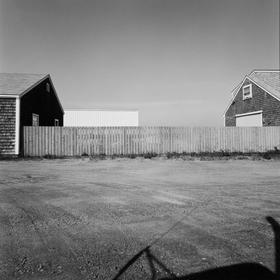A Personal History
For the next few posts I am going to relate my personal history as a career artist.
Why?
Because if I don't chronicle my own biography no one else will. I'd like to do it while I still have the ability remember it. Furthermore, there may be some value for you in reading one person's path in a career as an artist.
#1
Early Years
As a kid through my teenage years I was not a good student. I was distracted and mostly unmotivated to study. I cared about playing sports, skiing (I was a competitive skier in high school),girls (at adolescence), material things (go karts, mini bikes and later, cars), my friends, but I had no higher goals. My Dad was worried that I would be lost my whole life, with real justification.
By default I fell into art in not wanting to get drafted, at 20 or so. I found myself in a junior art school taking all kinds of classes: sculpture, painting, photography, 2D & 3D design. I found I had an affinity for the visual and for creative expression. Surprisingly, I had ideas. This for the first time, really, affirmed I had ability.
Photography hooked me early but painting was my first love. I spray painted large canvasses, masking off areas to produce large color fields. Where the imagery came from I didn't really know. Later, of course, I learned where this aesthetic came from. My paintings were abstract, horizon-based and landscape in origin. Starting with cans of Krylon, I soon progressed to a compressor and spray gun and mixing my own acrylics. Some of the paintings were as long as 14 feet. Most sold, relatively easily, which was odd as I was a real neophyte. I finished that junior college and was successful in transferring into the RI School of Design, but my efforts to be a painting major failed as I didn't know how to draw. As my Plan B, I succeeded in getting in with a photography major. I continued to paint that first year but was immersed in all things photography in my classes. Soon photography took precedence and painting trailed off. I was learning photography from the ground up, whereas in painting I didn't know what I was doing. I opted for photography, rather than painting which I didn't know and had little training. It was a conscious and mature decision, perhaps one of my first, to put all I had into the study of photography and it was a good one. I never looked back.
#2
Study
I was now studying in the big leagues at RISD, with Harry Callahan and other faculty in those two undergraduate years and then with Aaron Siskind as well in graduate work at RISD resulting in a MFA in Photography in 1973. While my work grew and matured, there was nothing particularly ground breaking about it. I worked hard on my skills in my study. I became a very good black and white printer, and used good equipment (4 x 5 view camera and a Rollei SLR 120mm camera called a SL66) to make black and white photographs that were refined, smooth and increasingly well designed.
Teaching became my goal and what I sought when I finished RISD, with little success initially. But I was driven now in my work as an artist. I photographed daily, built my own darkroom wherever I lived, processed my own film and always made my own prints. This was a single minded obsession to the exclusion of much else. However, while my education had prepared me well in photography and art I was not well prepared to make a living. I freelanced as an architectural photographer for a couple of years after school. In 1975 I got my first real teaching job at NESOP (New England School of Photography) in Boston. By then I was showing my work, at college galleries mostly: Dartmouth, Hampshire, Tufts, Harvard. By 1978 I was also teaching at Harvard and in 1981 I landed an assistant professorship at Northeastern University, where I stayed until I retired in 2012 as head of the Photography Program. I started the program and built it to be a large area of study, hiring faculty, overseeing the building of new facilities, designing the curriculum, orchestrating the changeover to digital and so on.
My art stayed within the realm of high-end black and white photography, progressing in the 80's to working principally with the 8 x10 view camera. I taught Ansel Adam's Zone System and practiced it too.

PMK Pyro became my preferred film developer and I became knowledgeable about various proprietary toners, including gold and used it with Kodak's Azo paper with success.
 From Fences and Walls, 1979
From Fences and Walls, 1979
My work matured and I developed my own voice, instead of being so influenced by my teachers. By 1981 I had discovered working in series, making sequential pictures in a narrative form. I called these Series Works (we made a book of these in 2005 called "American Series"). For all those years the level of immersion was total, with new work coming every few months, working simultaneously on different projects and using vacations and summers for making photographs. I learned that not only was I prolific but that I could back up my propensity to work hard with a flood of new ideas. I often travelled to make my pictures and was teaching in Italy for most summers during the 90's.
 Tarquinnia, Italy 1992
Tarquinnia, Italy 1992
I showed my work in galleries and museums during those years. By this time my work was being collected and in permanent collections as well. I was not making much income from sales of my prints, but didn't need to either as my salary from Northeastern was good and improving with promotions.
#3 Next up... the change to color and digital capture.
Stay tuned.

